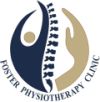Myofascial release is a therapeutic technique that focuses
on releasing tension and tightness in the fascia, a connective tissue that
surrounds and supports muscles, bones, and other structures in the body. It is
used to address myofascial restrictions and relieve pain and discomfort. Here’s
a summary of myofascial release:
1. Fascial
system: The fascia is a three-dimensional web-like structure that surrounds and
interconnects every muscle, bone, organ, and nerve in the body. It provides
support, stability, and protection, as well as plays a role in transmitting
forces generated by movement.
2. Myofascial
restrictions: Myofascial restrictions refer to areas of tension, adhesions, or
tightness in the fascia that can occur due to trauma, inflammation, poor
posture, repetitive motions, or stress. These restrictions can cause pain,
limited range of motion, muscle imbalances, and other dysfunctions.
3. Techniques
of myofascial release: Myofascial release techniques involve the application of
sustained pressure and gentle stretching to release fascial restrictions and
restore tissue mobility. Some common techniques include:
• Direct
myofascial release: Pressure is applied directly to the restricted area to
release tension and tightness.
• Indirect
myofascial release: Gentle stretching and positioning of the body are used to
indirectly release fascial restrictions.
• Trigger
point release: Specific points of increased tension or knots in the muscle
(trigger points) are targeted with sustained pressure to release the tension
and improve muscle function.
4. Goals of
myofascial release: The primary goals of myofascial release include:
• Relieving
pain and discomfort: Myofascial release aims to reduce pain by releasing
tension and pressure on nerves and improving blood flow to the affected area.
• Improving
range of motion: By releasing fascial restrictions, myofascial release can
enhance flexibility and restore normal range of motion in joints and muscles.
• Restoring
muscle balance and function: Myofascial release helps to restore proper muscle
length-tension relationships, address imbalances, and improve muscle function.
• Enhancing
overall well-being: The release of tension in the fascia can promote
relaxation, reduce stress, and improve overall physical and mental well-being.
5. Integration
with other therapies: Myofascial release is often used as part of a
comprehensive treatment approach. It can complement other therapies, such as
exercise, stretching, manual therapy, and postural correction, to address the
underlying causes of pain and dysfunction.
6. Self-care
and home exercises: Practitioners may teach patients self-care techniques and
home exercises to maintain the benefits of myofascial release between sessions.
These can include foam rolling, gentle stretching, and self-massage techniques.
